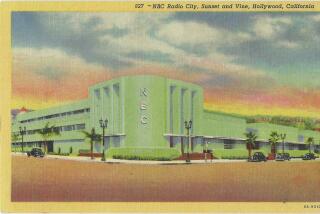CLASSIC ROCK? MOLDY OLDIES
Nostalgia, as they say, isnât what it used to be. And nowhere is the truth of that maxim any more apparent than in the crusty, moldy, positively moribund world of rock radio--where a new mutant format, âclassic rock,â has reared its doddering head with a ratings splash in many major metropolises.
In Los Angeles, the recent addition to the airwaves is KLSX-FM (97.1), which--in one of its many nauseous, self-congratulatory station mottoes--has an angry-sounding announcer proudly spitting that this heroic broadcasting outlet is nothing less than âthe station that brought classic rock back to Los Angeles.â
Oh, you bet. As if no other station in town has had the guts lately to play Freeâs âAll Right Nowâ or the Whoâs âWonât Get Fooled Againâ or Led Zeppelinâs âKashmir.â
To listen to the format for long, any gullible soul would reach the conclusion that virtually all the âclassicâ rock ânâ roll ever released was recorded by top-selling white artists approximately between the years 1972 and 1978.
And though the folks who concoct KLSXâs self-righteous slogans seem to be under the distinct impression that no other outlet in L.A. has the courage required to narrow its focus to this little era of rock history, one has only to turn the dial a few notches over to the almost equally rigor mortis-bound KLOS-FM (95.5) to realize that even non-classic album-rock radio is still focused on the â70s--either genuine oldies from the period or artists who have their roots there.
What KLSX and the others of its ilk across the nation have done is take that conservative attitude to its extreme, continuing to repackage the familiar without risking the potential âshock of the newâ in the slightest.
So we know that new is taboo, but just what makes old rock classic?
Elvis Presley or Jerry Lee Lewis? Right attitude, but just too darned early to be classic. New York Dolls or Sex Pistols? Right era, but didnât quite sell enough records to be classic.
And, needless to add, you wonât likely be hearing Gram Parsons, Funkadelic, ABBA, Leonard Cohen, the Ramones, the Ronettes, Elvis Costello, Big Joe Turner, or a host of the most important figures in rock ânâ roll, all of whom, for varying reasons, just donât fit the small-minded guidelines of what it takes to be classic.
Itâs easy enough to gather that a narrowly defined segment of mid-â70s rock is what a few marketing executives have determined it takes to make a fast buck off late-blooming baby boomers and their little brothers and sisters.
Still, can anyone really fathom that weâve gotten to the point where people are nostalgic for a time that was less than a decade ago? Nostalgic for Boston , no less? Is Irangate so disillusioning that we pine for those lazy, hazy days of Watergate instead? What the hell has gotten into us?
Donât blame it on the music: Thereâs never been a better time for new rock ânâ roll. The rich and varied smorgasbord that the avid rock fan has spread before him right now would have been unthinkable a decade ago.
Those who are indelibly attached to the pop-rock of the â50s and â60s can find those sounds living on in the work of captivating new artists like Chris Isaak, the Smithereens and the Bangles--while on the other end of the spectrum, thereâs a thriving underground for those who prefer innovators with no discernable roots whatsoever.
As far as brand new acts go, Concrete Blondeâs sizzling recent debut is every bit as promising as, say, the first album from Led Zeppelin. And a Top 40 that has expanded to include acts as intriguingly dissimilar as Crowded House, Prince, Bruce Hornsby, the Beastie Boys, Fleetwood Mac, World Party, Peter Gabriel, Run-D.M.C., Steve Winwood, the Georgia Satellites, Poison and Paul Simon is arguably the healthiest Top 40 of the rock era.
Markets, however small, have opened up and continue to thrive for pop, punk, metal, rap, country-rock, balladry, dance music and various cross-genres in-between, all of which have little or nothing in common other than a mutual debt to Elvis or Alan Freed. Many of us--hard as it may be for album-rock radio programmers to believe--even enjoy bits and pieces of all those styles.
But then, that diversity may not sit well with those who pine for the days when rock was a unilateral force that seemingly united a single counterculture--a romantic notion that, incidentally, is a myth of no little fabrication. Even in the hippie era--and yes, on into the beloved mid-â70s--rock was a loose medium representing a wide spectrum musically and philosophically.
And only when an honest attempt is made to represent that diversity can a rock station claim the label classic. Until then, local listeners can only hope and pray to someday be blessed with a radio outlet--whether its music is old or new or, best of all, both--thatâs as eclectic as Los Angeles.
As for KLSX, will it be able to find and keep a place in L.A. listenersâ hearts?
Radio trade magazines report that in other cities where similarly formatted âclassic rockâ stations have been around for a year or more, the outlets have tended to get off to a fast start in the ratings--and then plummet dramatically. Intense nostalgia for the recent past can be fun for a season, but even the most conservative listeners, it seems, occasionally like to be confronted with the shock of the new.
More to Read
The biggest entertainment stories
Get our big stories about Hollywood, film, television, music, arts, culture and more right in your inbox as soon as they publish.
You may occasionally receive promotional content from the Los Angeles Times.







